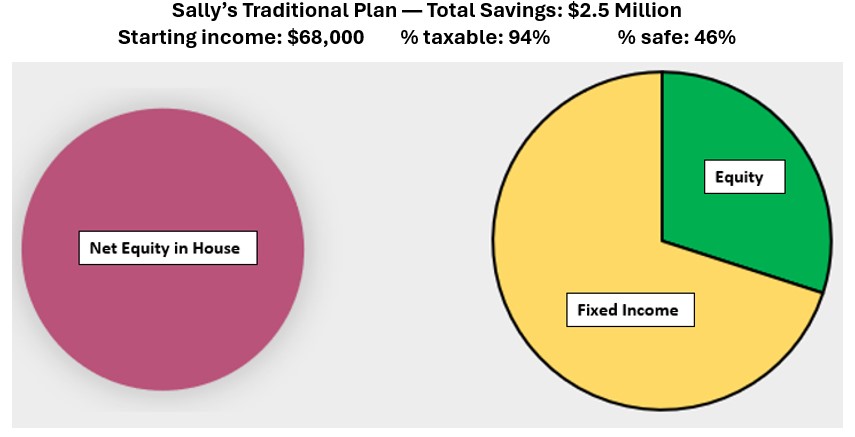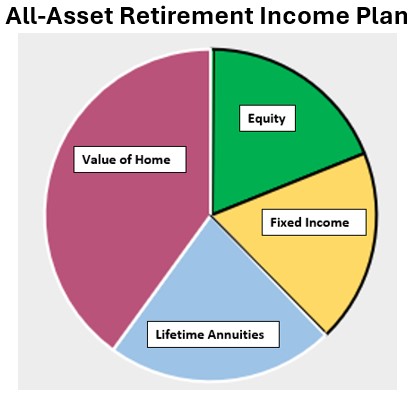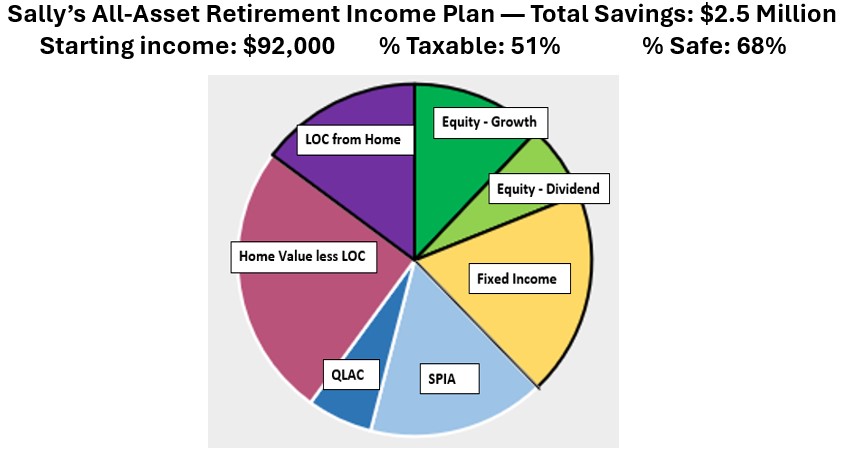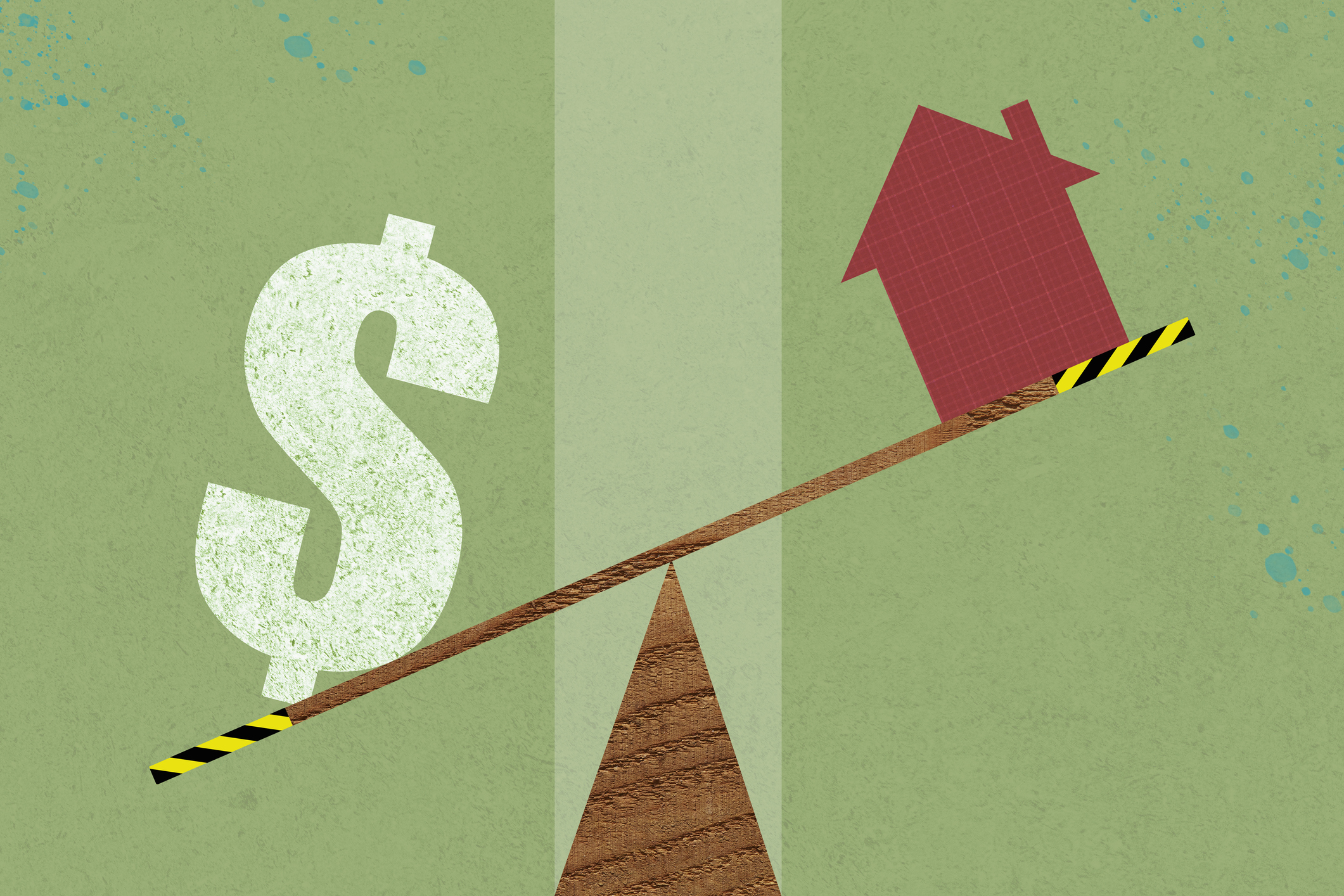How to Create a Retirement Plan That Checks All Your Boxes
You might consider starting with a model retirement plan that has already been assembled and is ready to be refined to meet your objectives.


If you like to oversee your own retirement planning, you have to do some homework. Most of you have gotten used to that and spend time on researching, sorting opinions and putting together the best approach for you and your family. Complicating the process is your need to address three key retirement objectives — lifetime income, liquidity for unplanned expenses and legacy for kids and grandkids. And, of course, you want to lower your taxes and have less market risk.
The product-by-product approach
Choosing among financial product options is sometimes fairly easy and is sometimes more challenging. When you’re comparing, for example, investments against guaranteed lifetime annuities, it’s not that difficult to measure market risk, tax effects and liquidity. It’s rarely an either/or decision, but rather a “how much.”
An advantage of this DIY approach is that you are in control of the decisions. The way to have confidence in your decisions, however, is to look at a plan with the options built in and then exclude those that don’t feel comfortable.
From just $107.88 $24.99 for Kiplinger Personal Finance
Become a smarter, better informed investor. Subscribe from just $107.88 $24.99, plus get up to 4 Special Issues

Sign up for Kiplinger’s Free Newsletters
Profit and prosper with the best of expert advice on investing, taxes, retirement, personal finance and more - straight to your e-mail.
Profit and prosper with the best of expert advice - straight to your e-mail.
A traditional plan is a start for most retirees
Here’s an example for Sally, the sample investor we often refer to, who at 70 years old looks at her financial situation in two distinct buckets:
- Retirement savings that total $1.5 million, with half in her rollover IRA and half in her personal (after-tax) accounts
- Her home, worth $1 million with no mortgage
She may have another bucket for short-term cash needs or higher-risk investments. These are excluded for this exercise when planning for the three key objectives.
As she developed her traditional plan below, Sally has followed conventional wisdom in at least two other respects:
- She invests her retirement savings 30% (100 less her age) in equities and 70% in fixed income
- She plans to own her home without any mortgage in retirement

That’s about as simple as you can get. However, Sally realized it produces too little starting income ($68,000) vs. her 6% income goal — or $90,000 per year from her savings. (This doesn’t consider Social Security payments or any pension.) Drawing down another $22,000 to start, and increasing that annually to account for inflation, creates the risk of her running out of savings. And the $90,000 income goal doesn’t even consider the costs of long-term care and other unplanned expenses. (For more on this, see my article How ‘Home-Based Planning’ Can Address Long-Term Care Costs.)
Sally’s DIY starter plan is easy to understand, but if spending down your savings is not the answer, then how do you find the right plan design for you?
Start with a plan with the three L’s, then find the products
Begin with your goals, which for most retirees include lifetime income, liquidity for unplanned expenses and a legacy for heirs. To achieve those three L’s, your savings — including equity in your home — can be put to work in ways that Sally ignored in her plan above. Another part of the plan involves deciding which of your savings accounts you want to buy products from: tax-qualified or personal (after-tax) savings. Then, select single-purpose financial products that can be put together or eliminated to best serve your purposes.
For people who want to live in their own home as long as possible during retirement, access to home equity through a home equity conversion mortgage (HECM) is a consideration. And for lifetime income, which eases the fear of running out of money, converting some savings into lifetime income annuities provides a solution.
Those two (HECM and lifetime annuities) are not on every adviser or planner’s radar, but they should be on yours. Here’s a revised picture that shows how lifetime annuities and the value of the home add to a retirement plan. We call this an All-Asset Retirement Income Plan since it includes assets representing 90% of all asset classes.

Initial refinements to the All-Asset Retirement Income Plan
Now let’s apply these elements to Sally’s plan, which needs to be personalized for Sally’s age, gender and percentage of rollover IRA in her savings. Three important allocations are made in the refinement of this plan:
- Equity portfolios are allocated between high-dividend and growth portfolios
- The lifetime annuities are allocated between a SPIA (single premium immediate annuity) for current income and a QLAC (qualifying longevity annuity contract) for future income
- The value of the home is allocated between the HECM line of credit (with the amount determined by LOC percentages set by HUD) and the remaining equity

Sally’s All-Asset Retirement Income Plan delivers starting income of $92,000 that exceeds her objective of $90,000. She can add that extra $2,000 to her budget or reinvest it for future budgets.
Other deliverables under Sally’s All-Asset Retirement Income Plan
As you can see above, 68% of Sally’s income is “safe,” which means the income is not dependent on the liquidation or sale of investments. Even at a low market return, the plan will generate income from dividends, interest, annuity payments and drawdowns from HECM. (As part of the refinement process, planning software, such as that used by Go2Income, can test different investment returns and resulting plan outcomes.)
Her other objectives are also important, and the plan will help her achieve them:
- Liquidity. By adding the line of credit from HECM to her plan, more than 50% of her savings are liquid at the start, even with the addition of lifetime annuity payments.
- Legacy. Sally plans to live a long life, so the legacy, while delivered far in the future, equals or exceeds the original total value of savings.
- Lower taxes. Only 50% of her income is taxable through age 85. In turn, that will have a favorable impact on all of her taxable income, including Social Security and pension.
- Long-term care costs. Her liquidity is able to absorb, for example, substantial long-term care costs, with the impact felt on her legacy, not on income.
- Inflation protection. Under the starter plan with conservative return assumptions, her income grows by 1.4% per year until age 85. If inflation protection is a key objective, she can address it during the refinement process.
Of course, in order to achieve the best outcomes for Sally, she will need to speak with a financial adviser well-versed in all the elements of a diverse retirement plan. During that process, the plan can be attuned to Sally’s personal needs and desires.
You can order a Go2Income plan today based on the answers to three or four questions about your goals. Get started here with no obligation. Consult with your own qualified adviser, find an analytical tool to provide some guidance, or talk to a Go2Specialist.
Related Content
- A Different Way to Approach Your Mortgage in Retirement
- Transform Your Retirement Plan With This Powerful Combo
- Is Your Retirement Solution Hiding in Plain Sight?
- How Your Home Can Fill Gaps in Your Retirement Plan
- Annuities and Tax Planning Boost Retirement Income and More
Profit and prosper with the best of Kiplinger's advice on investing, taxes, retirement, personal finance and much more. Delivered daily. Enter your email in the box and click Sign Me Up.

Jerry Golden is the founder and CEO of Golden Retirement Advisors Inc. He specializes in helping consumers create retirement plans that provide income that cannot be outlived. Find out more at Go2income.com, where consumers can explore all types of income annuity options, anonymously and at no cost.
-
 Original Medicare vs Medicare Advantage Quiz: Which is Right for You?
Original Medicare vs Medicare Advantage Quiz: Which is Right for You?Quiz Take this quick quiz to discover your "Medicare Personality Type" and learn whether you are a Traditionalist, or a Bundler.
-
 Ask the Editor: Capital Gains and Tax Planning
Ask the Editor: Capital Gains and Tax PlanningAsk the Editor In this week's Ask the Editor Q&A, Joy Taylor answers questions on capital gains tax rates and end-of-year tax planning
-
 Time Is Running Out to Make the Best Tax Moves for 2025
Time Is Running Out to Make the Best Tax Moves for 2025Don't wait until January — investors, including those with a high net worth, can snag big tax savings for 2025 (and 2026) with these strategies.
-
 Original Medicare vs Medicare Advantage Quiz: Which is Right for You?
Original Medicare vs Medicare Advantage Quiz: Which is Right for You?Quiz Take this quick quiz to discover your "Medicare Personality Type" and learn whether you are a Traditionalist, or a Bundler.
-
 Time Is Running Out to Make the Best Moves to Save on Your 2025 Taxes
Time Is Running Out to Make the Best Moves to Save on Your 2025 TaxesDon't wait until January — investors, including those with a high net worth, can snag big tax savings for 2025 (and 2026) with these strategies.
-
 4 Smart Ways Retirees Can Give More to Charity, From a Financial Adviser
4 Smart Ways Retirees Can Give More to Charity, From a Financial AdviserFor retirees, tax efficiency and charitable giving should go hand in hand. After all, why not maximize your gifts and minimize the amount that goes to the IRS?
-
 I'm an Insurance Pro: If You Do One Boring Task Before the End of the Year, Make It This One (It Could Save You Thousands)
I'm an Insurance Pro: If You Do One Boring Task Before the End of the Year, Make It This One (It Could Save You Thousands)Who wants to check insurance policies when there's fun to be had? Still, making sure everything is up to date (coverage and deductibles) can save you a ton.
-
 Small Caps Hit a New High on Rate-Cut Hope: Stock Market Today
Small Caps Hit a New High on Rate-Cut Hope: Stock Market TodayOdds for a December rate cut remain high after the latest batch of jobs data, which helped the Russell 2000 outperform today.
-
 Should You Tap Your Home Equity Before 2026?
Should You Tap Your Home Equity Before 2026?As borrowing rates and tax law shifts converge, here's what homeowners need to know before pulling equity out of their home.
-
 What Investors May Face in the New Year: Interview
What Investors May Face in the New Year: InterviewKeith Lerner, the chief market strategist and chief investment officer for Truist Wealth, speaks with Kiplinger.
-
 My Adult Child Was Laid Off. Can We Discuss It Without Ruining the Holidays?
My Adult Child Was Laid Off. Can We Discuss It Without Ruining the Holidays?We asked mental health and financial experts for advice.